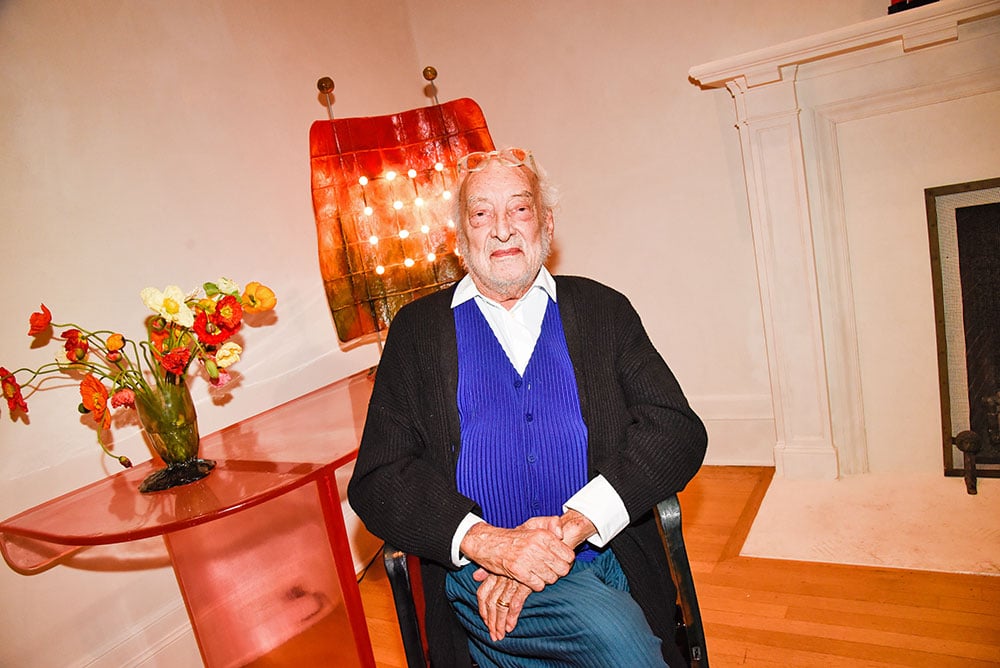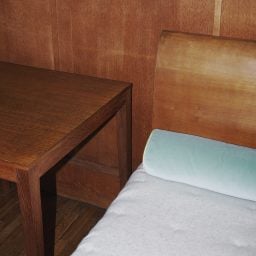Gaetano Pesce—the pioneering artist, industrial designer, and architect—is the subject of the exhibition “Dear Future” (through March 31) at the Future Perfect gallery in Los Angeles. Constituting a wide swath of the octogenarian’s life-affirming works, the exhibition sits comfortably in the storied Goldwyn House, the gallery’s new L.A. flagship and historic Hollywood mansion that once belonged to film producer and art collector Samuel Goldwyn.
“Dear Future” is an intriguing title for a show. Pesce, an Italian native who now calls New York home, certainly has a lot to tell the future, having been a leader in the design and architecture space for over five decades. So he has sprinkled the Goldwyn House with a variety of objects from his oeuvre—that is, topics of conversation he’d like to bring up with the future. These include new works, lively re-editions of iconic designs, and rarely seen historic pieces.
“The future is a beautiful moment,” Pesce told Arnet News, speaking of the future in the present tense. “I would like to tell the future that everything is possible, and we should give thanks for that. My work is something that people can smile about. It is a very cheerful and colorful show—and with a very positive message.”
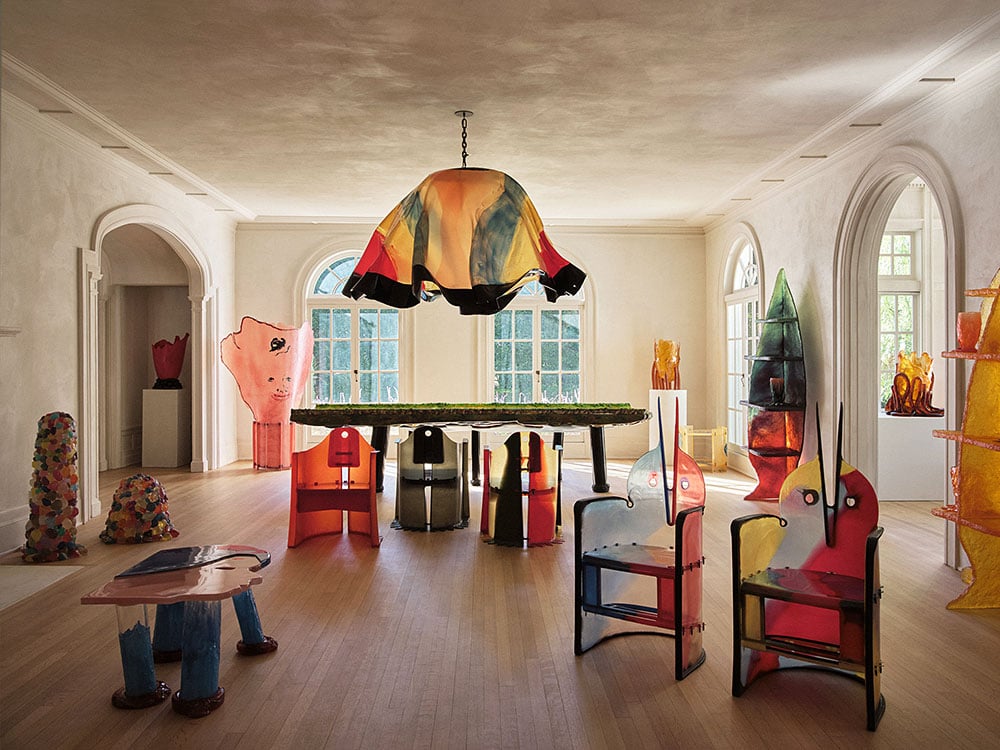
Installation view of Gaetano Pesce’s “Dear Future” exhibition. Photo: Rich Stapleton. Courtesy of the Future Perfect gallery.
Pesce emerged from the Italian Radical Design movement of the 1960s. The Florence-based group of designers and architects produced era-defining furnishings and products that looked to youth culture and the personality-driven ethos of the art world at the time. It was a forward-looking rebellion against the consumer-oriented industrial perfection of 20th-century Modernism.
Pesce was an eager participant in this blurring of boundaries between art, design, architecture, and a pop sensibility. As the gallery’s founder David Alhadeff said, “If Modernist architecture and design disregarded the individual and attempted to standardize the human spirit, Pesce’s life’s work has been to upend prescriptive modes of thinking—a form of counter-design that favors incoherence, unpredictability, eccentricity, and originality.”
Pesce would often imbue the effervescent style of his work with social critique. His first and perhaps best-known furniture series, “Up,” was released in 1969 with manufacturer B&B Italia, centered around a large reclining chair dubbed La Mamma. The chair’s generously curved contours were inspired by the fertility goddess Venus of Willendorf. Yet, its attached ottoman resembling a ball and chain underscored society’s supplication to the patriarchy. This was Pesce’s comment on women’s rights at the height of second-wave feminism.
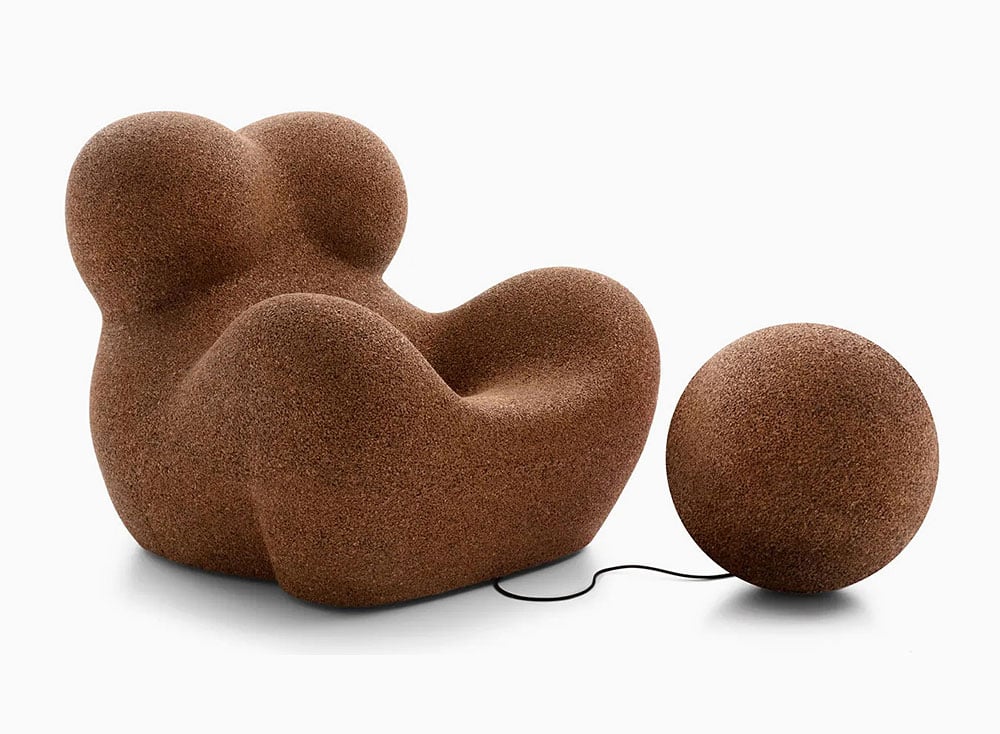
Gaetano Pesce with B&B Italia, UP 5-6, in cork. Courtesy of the Future Perfect gallery.
“The story of that chair is fantastic,” Pesce told Artnet News, “because that was a time when I was thinking that a piece of furniture can displace a political point of view. It was about the prejudice of men, the insecurity of men, the stupid ways men treat women. Not only was it a political work, it was also the beginning of design as expression, the beginning of design entering the field of art. It had become figurative.” In “Dear Future,” Pesce included a new edition of the chair made from recycled bottle corks sourced from Italy, one of only two that have been made.
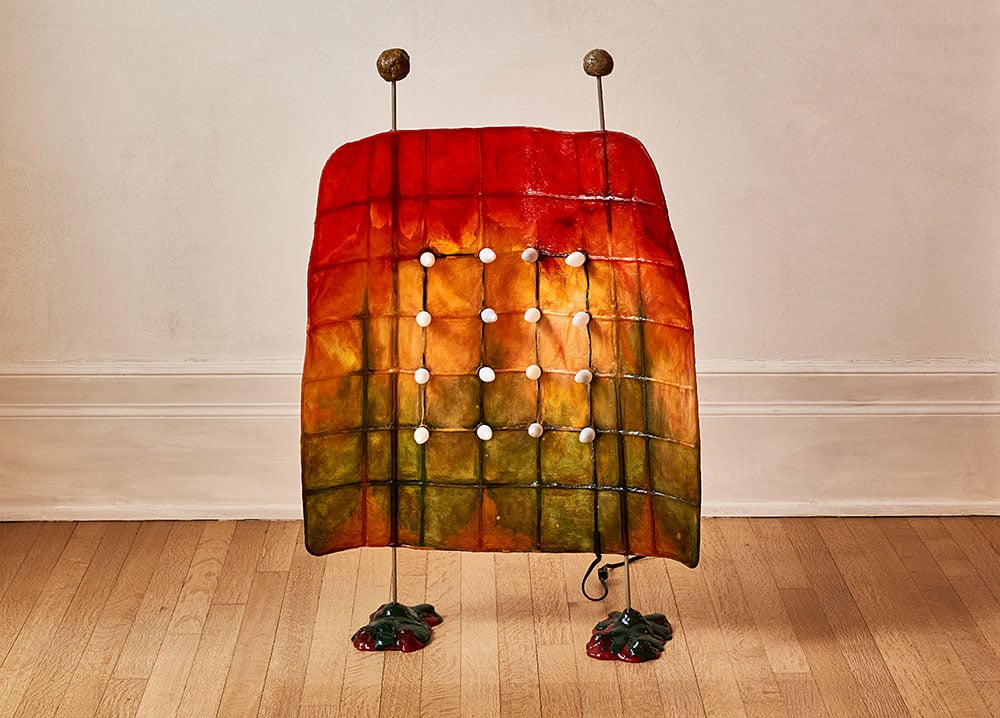
Gaetano Pesce, Square Airport Lamp. Photo: Elizabeth Carababas. Courtesy of the Future Perfect gallery.
Uniformity had become anathema to Pesce’s philosophy, as seen in the crudeness of his striking Square Airport Lamp (1986/1994), a light sculpture consisting of a flexible rubber membrane studded with small light bulbs. Although made from a mold, no two lamps are alike, due to the imperfections that arise from the hand-mixing and pouring of colored urethane.
Pesce committed to creating what he called “mass-produced originals” that centered human touch, like his ongoing “Nobody’s Perfect” chair series (2002/2019–present). Cast by hand without standardized colors or dimensions, and poured freeform by the artist himself, each chair is unique.
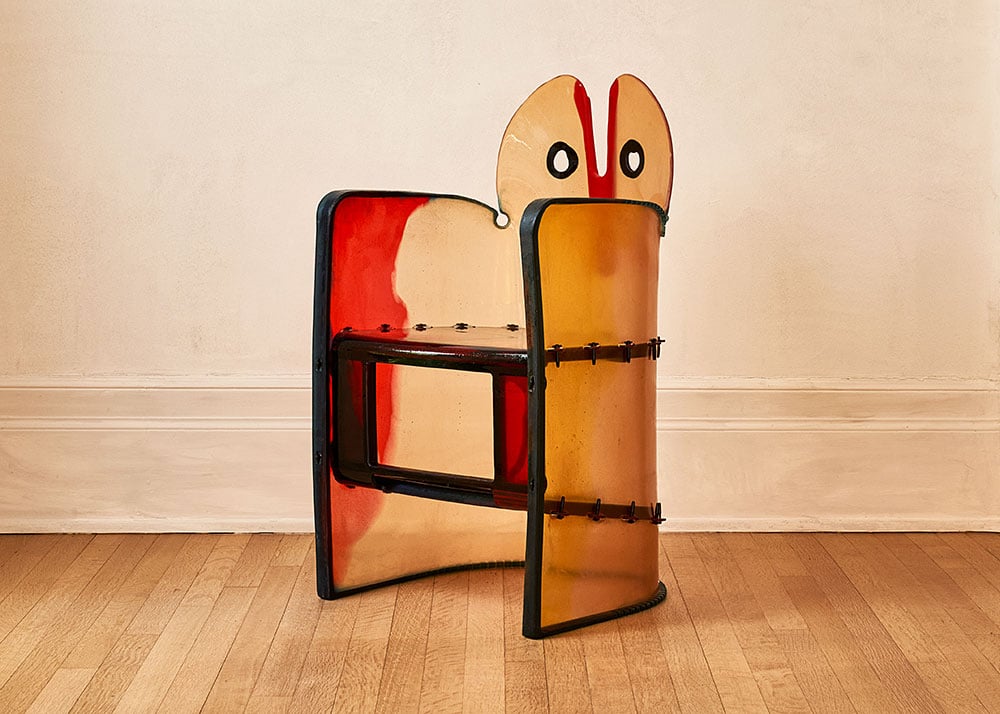
Gaetano Pesce, Nobody’s Perfect chair. Photo: Elizabeth Carababas. Courtesy of the Future Perfect gallery.
“I have been saying this since I was still in school and made a manifesto about it,” Pesce explained. “I think copied material is the past. We are living in a period of uniqueness that is possible because we have the technology to make all-new objects. The first company that helped me realize this was Cassina. We did a series of chairs called ‘Sit Down,’ where each piece was similar to one another but not exactly the same. This is always more and more possible, because technology is refined all the time.”
“Innovation is something that helps people live better,” he continued, “and discover new things, to think differently from one day to the next. Innovation is not repetition.”
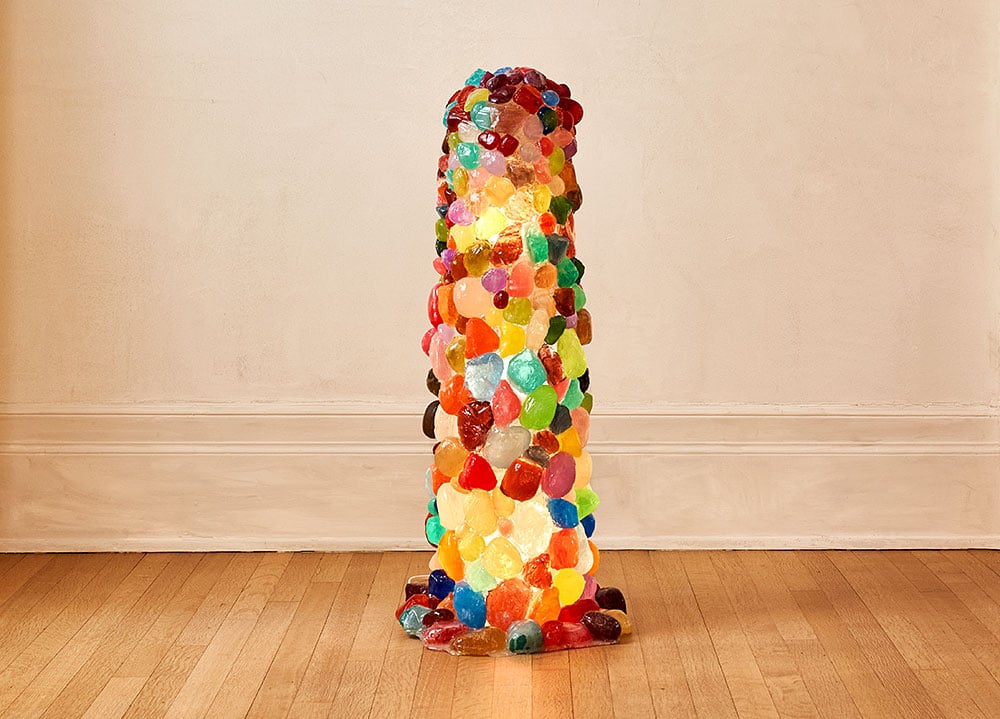
Gaetano Pesce, Multicolored Lamp with Rocks (2022). Courtesy of the Future Perfect gallery.
Pesce’s insistence on originality is again expressed in his more recent “Multicolored Lamps with Rocks” series, cast in resin from stones collected by the artist himself, reminiscent of the meditative act of stacking stones into piles. Two of these appear in the show, as do Pesce’s series of pliable, amorphous resin vases, some seeming to ooze like molten lava, while others appear to grow feet or tentacles.
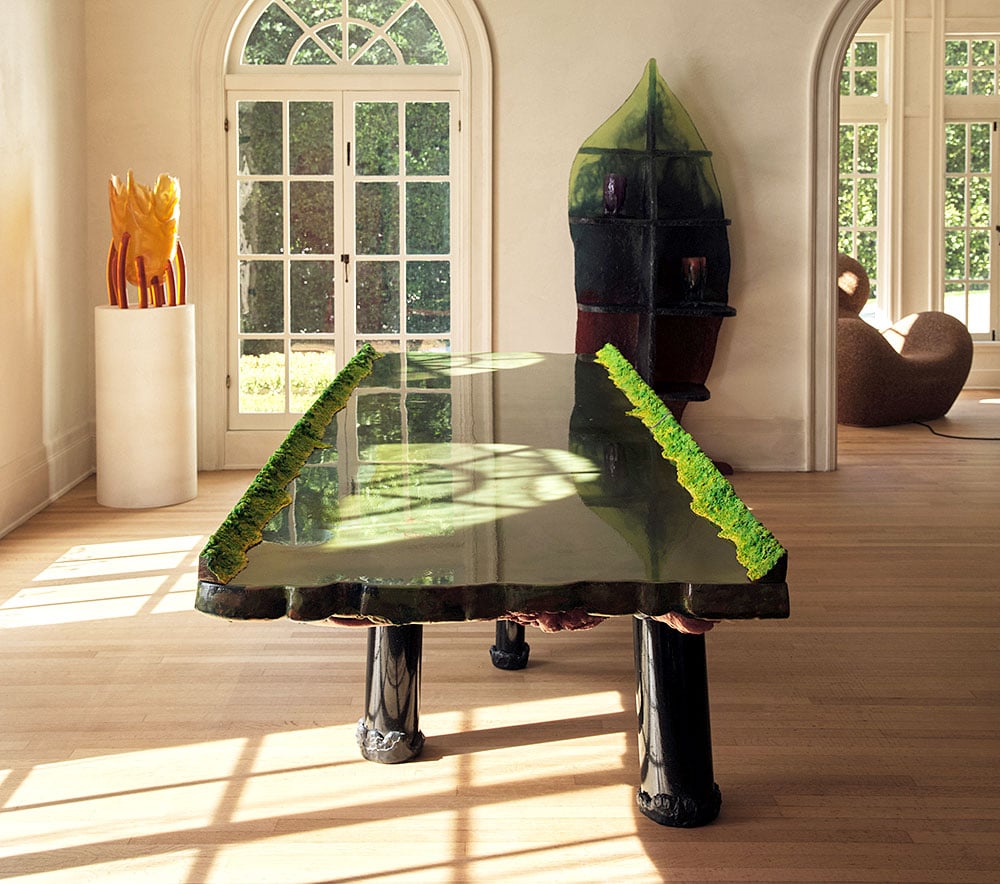
Installation view, River Table (2012) in foreground. Photo: Rich Stapleton. Courtesy of the Future Perfect gallery.
Another theme in Pesce’s work has been humankind’s relationship to nature. For “Dear Future,” he included River Table (2012), a rare item from his “Six Tables on Water” series, a collection of six monumental waterscapes representing an ocean, lagoon, pond, puddle, river, and lake. With thick legs reminiscent of tree trunks, River Table’s clear surfaces evoke water’s transparency or cloudiness, with patches of darker pigment suggestive of chemical pollutants.
“Water is alive, it’s a pure element; We mustn’t pollute it,” Pesce said of this piece. “Design can be a way to say, ‘be careful, we are destroying something precious.”
Part of “Dear Future,” Pesce’s theoretical letter to an unknowable time, is to send a special message to young people, the designers and architects of tomorrow. “Each of us has something inside,” he said. “Young people should not look too much to magazines or follow this or that. It is important to understand what they have inside—that inside is unique. They have to express that. This is the future.”
“Gaetano Pesce: Dear Future,” through March 31, 2023, The Future Perfect’s Goldwyn House, Los Angeles (by appointment only: 323-202-2025).
More Trending Stories:
A Wall Street Billionaire Shot Himself in His Family Office. His Death Is Reverberating in the Museum World, and the Art Market
Researchers in Vietnam Discovered That Two Deer Antlers Languishing in Museum Storage Are Actually 2,000-Year-Old Musical Instruments
‘That Little Piece of Energy Is Magnified’: Artist Wangechi Mutu on Honoring the Spirit of the Natural World in Her Fantastical Works
We Asked ChatGPT About Art Theory. It Led Us Down a Rabbit Hole So Perplexing We Had to Ask Hal Foster for a Reality Check
‘Innovation Is Not Repetition’: Living Legend Gaetano Pesce on His Boundary-Pushing Furniture Design and ‘Mass-Produced Originals’
Hit Mockumentary ‘Cunk on Earth’ Offers an Absurdly Comic Take on World History. Here Are 5 Things It Gets Right About Art
A Photographer Who Found Instagram Fame for His Striking Portraits Has Confessed His Images Were Actually A.I.-Generated
After Sending ‘Girl With a Pearl Earring’ Out on Loan, the Mauritshuis Has Hung an A.I. Facsimile in Its Place. Fans Are Not Happy
Archaeologists Believe a Piece of Flotsam That Washed Up on a New York Beach Could be Part of an 1821 Shipwreck
